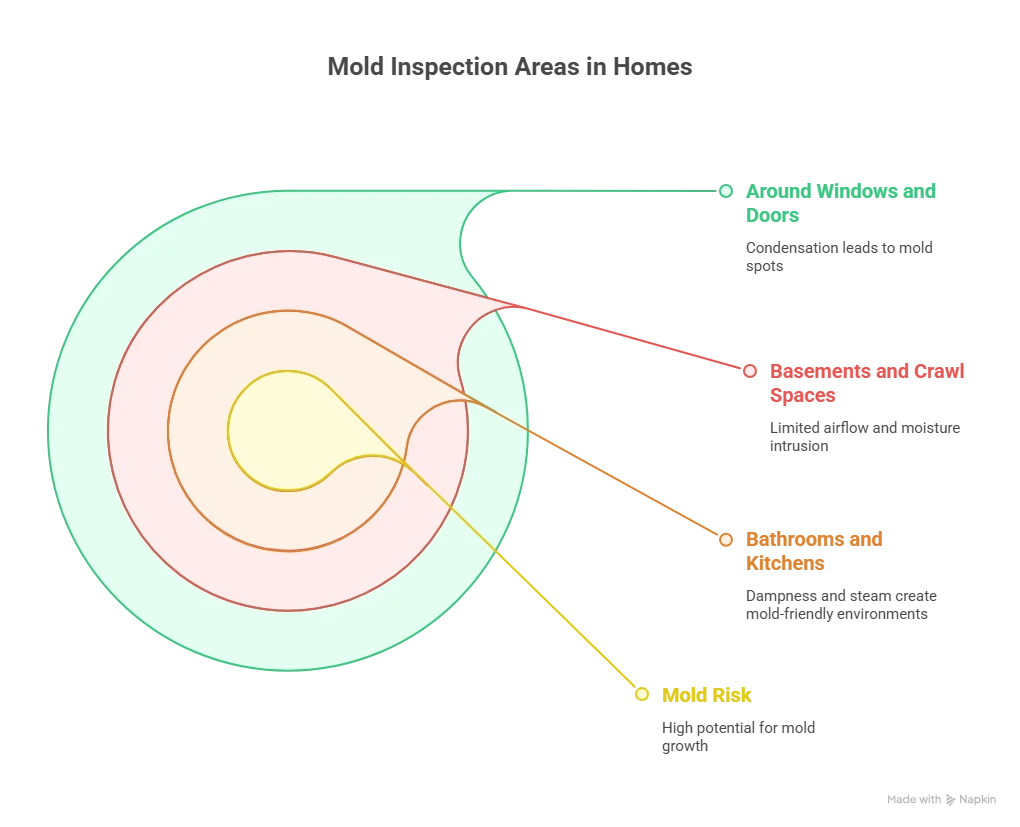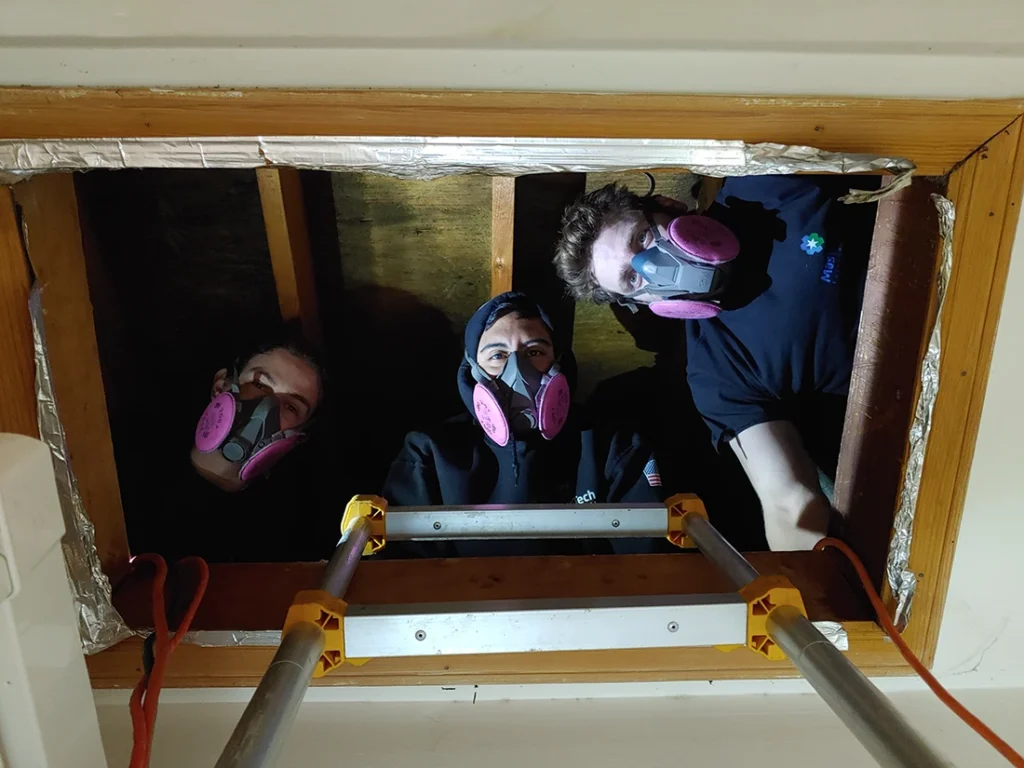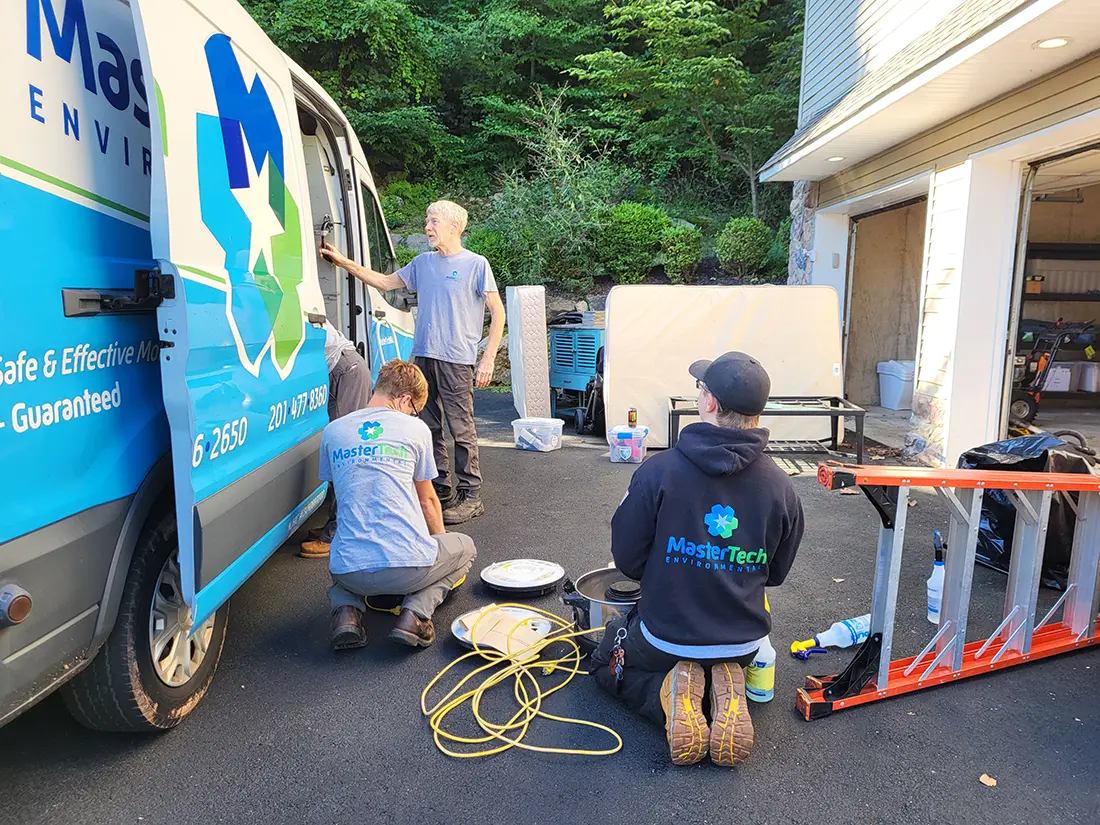Suspecting mold in your Newport Beach home can quickly shift from a minor concern to a source of genuine stress. Maybe you’ve noticed odd odors that won’t go away, or someone in your household keeps experiencing allergy-like symptoms only when they’re indoors. You might wonder if you’re overreacting or if there’s genuinely something hidden behind your walls, silently affecting your family’s well-being. Mold isn’t always noticeable, but even subtle clues can reveal that it’s present and quietly growing.
Accurately detecting mold can be challenging without proper guidance. Mold thrives silently, sometimes completely unseen, and only surfaces after it has significantly spread. Understanding precisely how to recognize mold early is crucial because early detection reduces health risks and prevents costly damage to your Newport Beach home. By identifying key visual signs, unusual odors, health symptoms, and common indoor moisture problems, you can confidently decide when to seek professional help.
Visual Signs of Mold You Might Be Missing
Mold often starts quietly, appearing as subtle spots, stains, or discolorations around your home. Homeowners often overlook early mold growth because it may initially resemble dirt or harmless water stains. Recognizing these signs early and understanding how mold visually presents itself ensures you catch potential issues before they escalate into serious problems.
Common Places Mold Appears
Certain areas in Newport Beach homes are particularly prone to mold due to their consistent exposure to moisture or inadequate airflow. Knowing precisely where to look first can significantly improve your chances of identifying mold early. Be particularly vigilant in the following areas:
- Bathrooms and Kitchens: Persistent dampness, steam, and inadequate ventilation frequently allow mold to establish on grout lines, caulking, walls behind fixtures, or beneath sinks. Regularly inspect these areas for signs of dark spots or subtle discoloration.
- Basements and Crawl Spaces: Limited airflow and occasional moisture intrusion, especially after heavy rains, create ideal conditions for mold growth. Check for patches, stains, or discoloration on walls, flooring, and around windows.
- Around Windows and Doors: Temperature fluctuations between the inside and outside air often cause condensation to form around windowsills or door frames. Look carefully for black, greenish, or brownish spots appearing where moisture frequently gathers.
Recognizing Subtle Mold Patterns
Mold doesn’t always look dramatic or noticeable. It can appear as subtle staining or faint shadows behind paint, wallpaper, or ceiling tiles. If a stain resists normal cleaning methods or returns shortly after cleaning, mold is likely present beneath the surface.
Careful observation can reveal subtle indicators like:
- Paint that is bubbling, cracking, or peeling unexpectedly, indicating hidden moisture and mold beneath.
- Wall stains or discoloration that keep resurfacing despite repeated cleaning attempts, indicating the presence of deeper, hidden mold colonies.
- Slight fuzziness or texture appearing on surfaces like drywall or wood, signaling early mold growth.

Musty Odors: Mold’s Silent Calling Card
Sometimes, the first sign of mold isn’t something you see but rather something you smell. Mold releases distinct musty odors often described as damp, earthy, or stale, and these odors frequently become more noticeable when indoor moisture levels rise.
If your home consistently smells musty, especially in certain rooms or during humid weather, this odor likely signals hidden mold growth. Mold colonies can flourish behind drywall, beneath flooring, or within HVAC ductwork, making them challenging to identify visually.
Pay careful attention if you notice odors that:
- Become stronger after rainy days or during periods of higher humidity, suggesting hidden mold colonies activated by moisture.
- Persist or intensify when your home is closed for extended periods, indicating mold inside HVAC systems or structural components.
- Seem concentrated in specific rooms or areas, guiding you to hidden mold sources you might otherwise overlook.
Unexplained Health Symptoms Linked to Indoor Mold
Another common yet frequently overlooked mold indicator involves persistent health symptoms that appear or worsen specifically inside your home. Mold spores and byproducts can trigger respiratory problems, allergies, and general malaise in sensitive individuals, making indoor mold exposure a genuine health concern.
If you or your family members experience repeated allergy-like symptoms, pay close attention to patterns, timing, and severity.
- Respiratory issues: Persistent congestion, coughing, wheezing, or throat irritation that improves when you leave the house.
- Eye and Skin irritation: Red, itchy, watery eyes or unexplained skin rashes when indoors.
- Headaches and Fatigue: Recurring headaches, tiredness, or general discomfort that seem unrelated to other conditions and dissipate when spending time away from home.
Sensitive populations, such as young children, elderly individuals, or those with weakened immune systems, can be particularly affected by mold, experiencing more pronounced symptoms or complications. Recognizing these signs early and understanding their potential link to mold exposure helps you determine if professional mold testing Newport Beach is necessary.
Identifying Indoor Conditions That Allow Mold to Thrive
Mold requires moisture to grow, which means certain household conditions significantly increase mold risks. Identifying persistent sources of moisture helps you understand precisely why mold might be growing unnoticed in your home.
Common household conditions conducive to mold growth include:
- Previous Water Damage or Leaks: Unresolved moisture from roof leaks, plumbing failures, or flooding events often leads to hidden mold colonies inside walls, beneath flooring, or above ceilings.
- High Humidity Levels: Consistently elevated indoor humidity, particularly above 60%, encourages mold growth on surfaces that remain damp, even if only intermittently. Pay attention to frequent condensation forming on windows, walls, mirrors, or bathroom fixtures.
- Poor Ventilation: Inadequate airflow, especially in bathrooms, kitchens, or laundry rooms, traps humidity, allowing mold to thrive behind fixtures, cabinets, or appliances.

Why Professional Mold Inspection Newport Beach Matters
Even after noting visual clues, odors, health symptoms, or household moisture conditions that point to mold presence, you might still feel unsure about whether mold exists or where precisely it is located. Our team offers certainty and peace of mind by accurately pinpointing the location, species, and severity of mold.
Professional inspectors utilize specialized tools and methods that provide precise results far beyond the scope of visual inspections or DIY kits.
- Infrared Cameras and Moisture Meters: Advanced tools detect hidden moisture within walls, ceilings, and floors, precisely identifying mold-friendly environments that aren’t visible to the naked eye.
- Professional Air and Surface Sampling: Certified inspectors collect targeted air and surface samples, which are then sent to accredited laboratories for analysis. Reports identify specific mold types and concentrations, clarifying exactly what’s present in your home.
- Detailed, Understandable Reports: Professional inspectors clearly explain results, providing homeowners with detailed information about mold locations, species, potential health implications, and recommended next steps.
Our team provides peace of mind, helping to eliminate guesswork and ensuring you have the accurate data needed to make informed decisions about mold remediation.
Making a Confident Decision for Mold Remediation Newport Beach
Identifying mold early in your home protects your family’s health and prevents costly structural issues. Paying attention to visual clues, persistent musty odors, unusual health symptoms, and common moisture problems allows you to spot mold before it spreads unnoticed. If these signs are present or you suspect hidden mold, professional mold inspection in Newport Beach is the essential next step.
MasterTech Environmental specializes in precise mold testing and thorough inspections. Our certified professionals use advanced tools and clear reporting to pinpoint mold problems accurately. We guide you carefully and transparently through each step. Reach out to MasterTech Environmental today—your peace of mind and your home’s safety depend on clear, decisive action.









